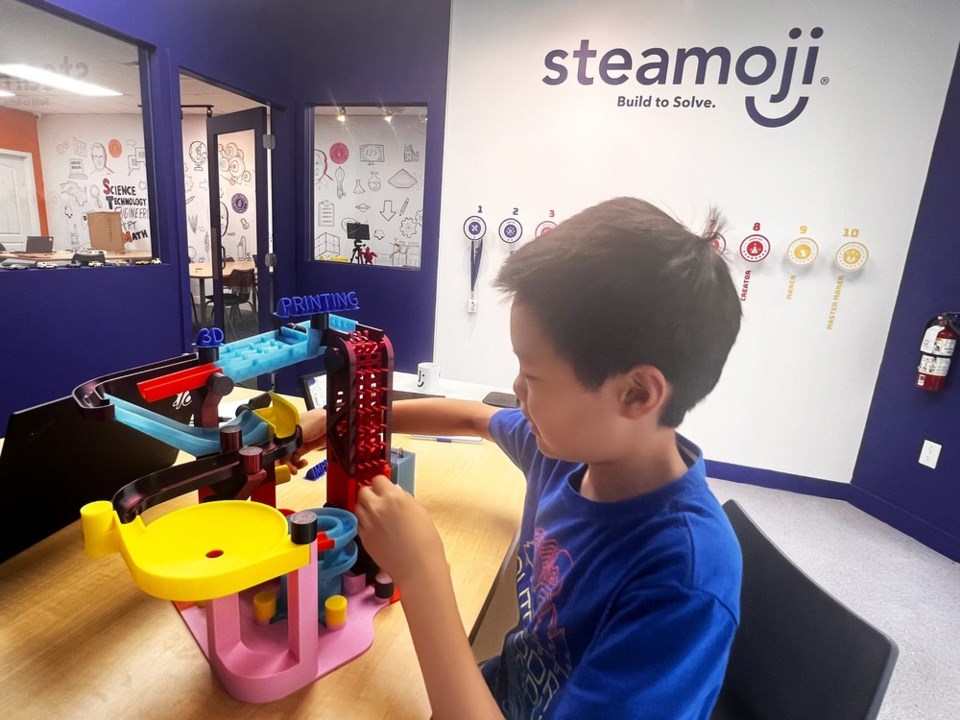At just 12 years old, Norman Huang’s future job options can only be characterized in one way – full steam ahead and it’s largely because of the training he’s received through an innovative, hands-on learning model that isn’t found in the traditional school system.
Enter the world of Steamoji, an after-school science, technology, engineering, art and math (STEAM) program new to Burnaby featuring a curriculum that takes apprentices through a 400-hour program where they learn coding, robotics, 3D printing, digital art and 3D design, as well as other innovative technical skills.
Having previously completed his Steamoji training in West Vancouver, Norman is now helping his father Sean launch a Steamoji franchise in Burnaby’s Metrotown Mall in the coming months.
“My son loves it because it gave him a lot of hands-on, project-based learning,” Huang says. “He’s learned a lot of new things about technology and he’s doing all the technical parts to help me set this franchise up because, from the technology perspective, he’s much better than me and he’s a very good helper.”
Practical theory, real-world applications
Huang says many parents feel that traditional schools don’t adequately prepare their children for the careers of their future. This feeling is particularly acute for parents currently working in STEAM fields, as they see a disconnect between the skills that are needed and what their children will learn.
“Schools are often constrained by slow-changing standards, school board requirements, existing infrastructure and available personnel. If they are exposing children to these subjects, it is often in a very restricted fashion,” Huang says.
Steamoji aims to fill this gap by producing a structured and reinforced project curriculum designed to provide 400 hours of student activity.
The Steamoji method helps train children to become future builders, makers, inventors or entrepreneurs as they complete missions across four subject pathways: fabrication, physical computing, engineering and digital arts.
“Because we are a project-based model, it’s very engaging,” Huang explains. “So, for the kids, it’s much easier to want to continue with their studies because they won’t lose their interest and will have the inner drive to achieve their goals.”
Learning today for the careers of tomorrow
Consider the career paths that Steamoji can pave the way for: architects; structural, mechanical or electrical engineers; 3D printing and design; computer animation; coding; robotics, software engineering or opportunities across the video game and film industries.
“Today’s jobs are mostly electronic or online, so these are the types of jobs that will be around for a long time to come,” Huang says.
Completed over 400 hours spanning four years, the Steamoji curriculum is taught over two, one-hour sessions per week. Facilitators and apprentices are always on hand to guide the students along their learning path and to answer questions.
“If you picture disassembling a car engine, we don’t just simply give students a hammer and screwdriver,” Huang says. “We show them how to fully solve the problem. This way, the kids build a connection between the knowledge base and the real-world problem.”
For more information, or to sign up for the upcoming Steamoji programming in Burnaby, email [email protected].



